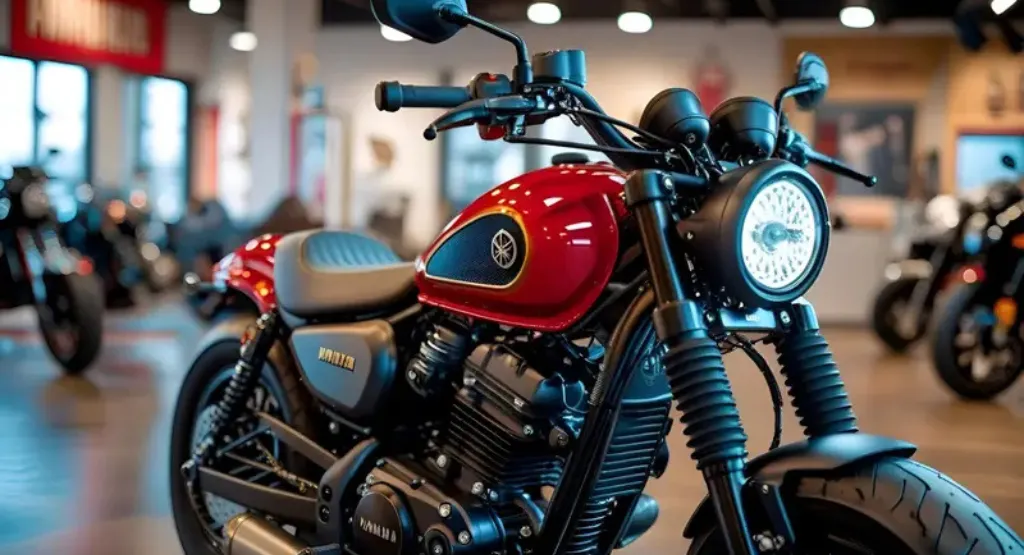Motorcycling in India: Yamaha RX100 has left a legacy few motorcycles have on Indian roadscape
One of the smallest ever production motorcycles, at least for a public introduction (until assembly in the mid-1980s this diminutive 100cc two-stroke was both introduced and lived a rich, cultural afterlife for decades after production ended.
That original RX100 in its distinctive exhaust note, the prodigious pace of youth and design that is taking a timeless design that newer, technology assisted versions have yet to replicate.
In this article we are going to dig deep into one of the phenomena (in case not forever, which it most certainly is), the Yamaha RX100.
History of the Sector—Introduction to India
The late, lamented mid-1980s is the time and age new India was transitionally parting with its already rusted transportation-oriented settlements from sand to steel.
The government were starting to soften import guidelines and it was about to become possible for foreign companies, in joint ventures with Indian firms.
This policy change provided Yamaha Motor Company the chance to start a two-wheeler market in the immense Indian market now underway.
Yamaha started with a tie-up from Escorts Group in 1985 to the RX100 for Indian consumers.
The timing worked (India was undertaking economic liberalization just then, middle class citizens were in the market for transport beyond mere necessity).
Engineering, Technical Specifications
RX100 Power of Heart was 98cc, air-cooled two-stroke single-cylinder engine and the brains behind it.
The powerplant, to use a more car-relevant term, produced about 11 bhp @7500 rpm, but more importantly a reported torque figure of 10.39 Nm late at 6500 revs – modest by today standards but killer both in a world where the displacement class rarely thought twice about an Indian.
It came with Yamaha’s torque induction system the engine manufacturer most famous for, which optimized power from low rprngs up.

The two-stroke is the motorcycle, simple and direct, compared to much bigger four-stroke designs that may provide more power but at the hefty price of both mass and immediate throttle response and harmonic balance.
Power was sent by means of a 4-speed constant mesh gearbox with an integrated wet multi-plate clutch. The gearing was perfect for the engine, and riders were able to get all the performance out with very little effort.
The Riding Experience
People who have ridden the RX100 usually describe it in awe, and they should. Now the modern fuel injected and emissions compliant motorcycles just cant quite offer quite a level of sensory that there once were.
It started, like any other cord-on 2-stroke motorcycle, [with the kick-start procedure — it would be a slow downward pressure into cold air.]
Blue smoke from the tailpipe and a ring-a-ding idle note chronicled that this was the motorcycle that was right around the corner.
Starting from cold, the RX100 showed, like any other two-stroke does just on its stand, a slight hesitation to pick-up power-band kicking-in between 3000 and then-off.
Like, for a 100cc motorcycle this acceleration was phenomenal.
The RX100 s Legacy and Influence
It was not only its physical characteristics that impacted the world. Released at a time when the youth of India were beginning to value self-expression, motorcycle became the herald for freedom rebelling against aspirations.
In most Indian towns and cities the RX100 was THE cool motorcycle of its era. It caught on with the younger crowd and was synonymous to speed, just as sth like pillion conscious.
The motorcycle was significant within the regional cinema and hence higher it’s cultural meaning.
The RX100 also gave rise to a flourishing of modification scene owners customised their scooters with expansion chambers, port modifications and styling parts so as to differ from others and get a little more performance.
Evolution and Dissolution
The RX100 saw very small changes through its production run. The first cars had a unique square headlamp and speedo while later models used round headlamps with slightly different instrumentation.
Some of the core mechanical components stayed largely the same, a testimony to the durability of the original design.
Yamaha tried to capitalize on the success of the RX100 with things like RXG RX135 and RXZs. Although many other motorbikes and their fans, none ever elicited the iconic status of the original RX100.
The final shoot of RX100 in 1996 itself was due to sudden changes in emission norms.
The Collectible Phenomenon
Now the Yamaha RX100 has left its motorcycle status behind to become a coveted piece of collectables for today’s buyer.
A well preserved or painstakingly restored may cost ₹80,000 to ₹1,50,000, but that is incredible for a motorcycle that was selling for less than Rupees 12,000.
These higher valuations have kick-started a wave of restoration work, drawing classic streetworthies in from the wild.
Original parts are getting harder and harder to get, so there a mad rush for new old or rebuild components.
Mere collectors spare a word for early machines, square headlamps and original paint schemes included.
The Spiritual Successors
RX100 has not been made for decades, the motorcycle that inspired the RX100 is alive and well on other motorcycles sold as having it reincarnation.
While not on the same technology platform as RX100, Yamaha’s own R15 sport bike still hints at its sporting credentials and attainable naivety.
Directly more, that renewed RX100 mania has encouraged other brands to go in for retro styled monsters with a fresh skin.
And, models like the Jawa 42 and Royal Enfield Classic 350 hit on similar nostalgia buttons even though mechanically they are about as different.
Technical Challenges and Solutions
The biggest factor in the RX100s enduring service was its mechanical simplicity, and the inventiveness of its custodians and mechanics.
One of the easiest two-stroke engines you will ever encounter (with less parts than your standard four-stroke engine) and not having to be too fancy about it, they were pretty damn durable.
Over the years as parts became more rare, a guild of specialist engine builders and fabricators sprang up to service the dwindling RX100 population.
Artisans honed their craft on replacing parts that were, in newer motorcycles, installed only as sell-by products and therefore pushed the effective lifetime of veteran machines.
Yamaha RX100 dhansu look Coming June 2025
There more than just one of the best product in Yamaha’s history story behind Yamaha RX100, but a timeless marriage between mechanical perfection, perfect market timing and cultural relevance. Its short production run belies the massive impact it had on motorcycling in India.
What made the RX100 so special is that generations love it. Longtime exponents cling to it, and newbies who were born too late to actually experience the bike still go in search of an authentic motorcycle riding experience living legend.
In a world where vehicles are becoming motorized with efficiency and technology, instead of character and interaction the RX100 remains to be regarded as great, earning respect from enthusiasts of the past.
MarshalAs regards that emotional connection between rider and machine resonates deeply even now.

